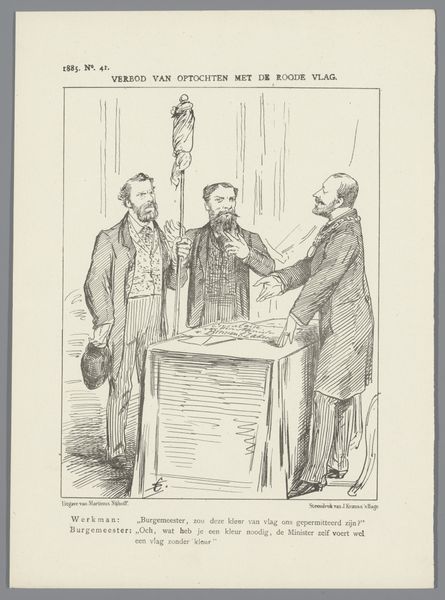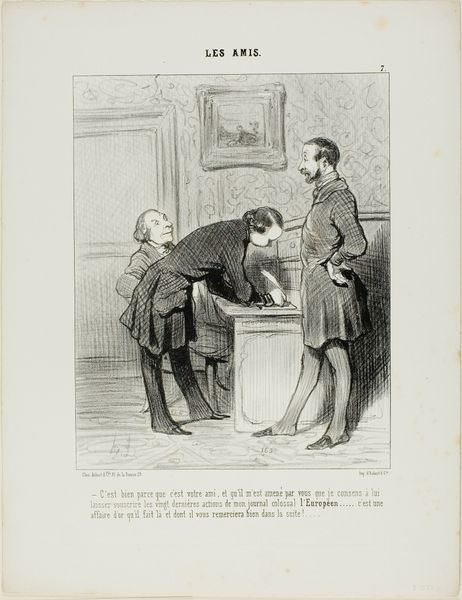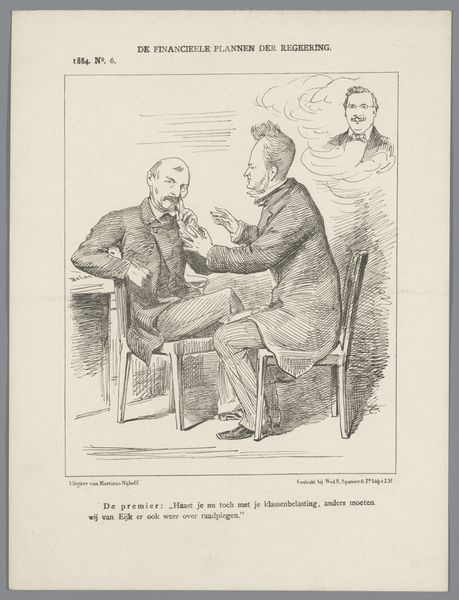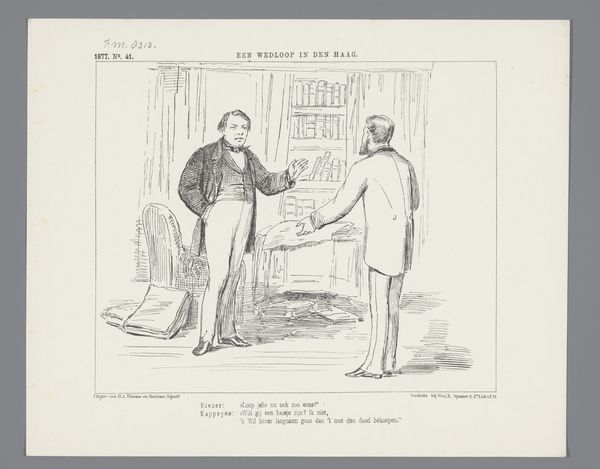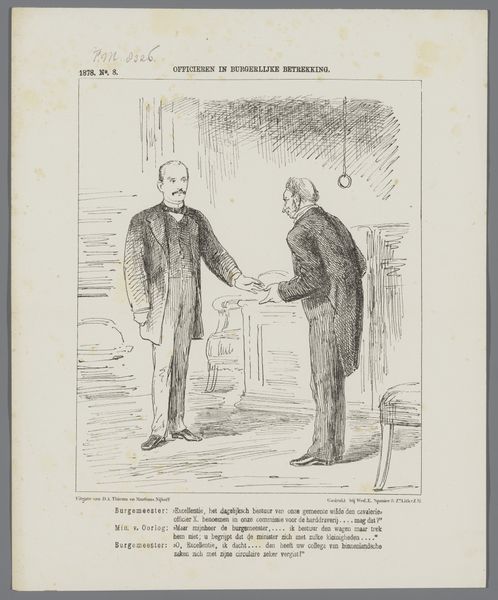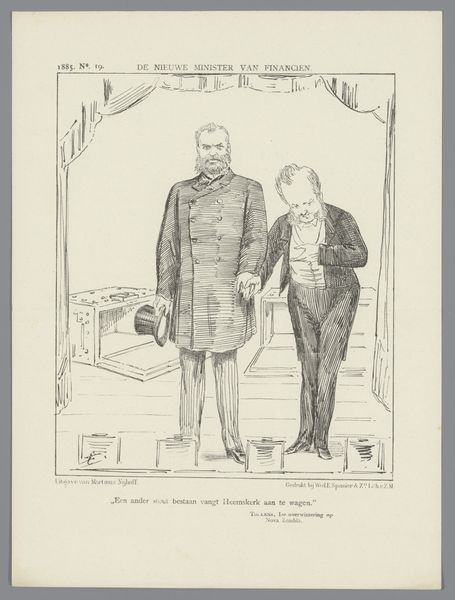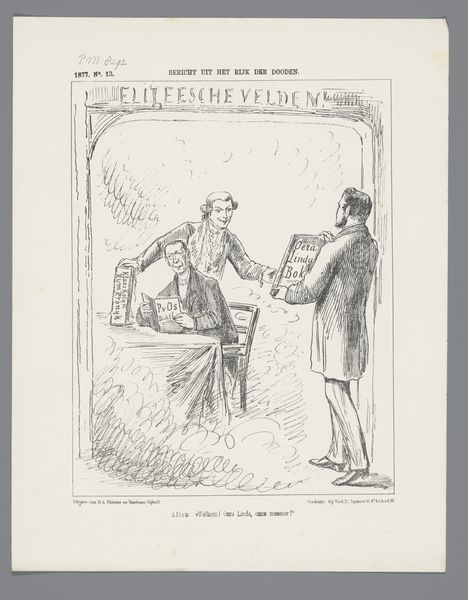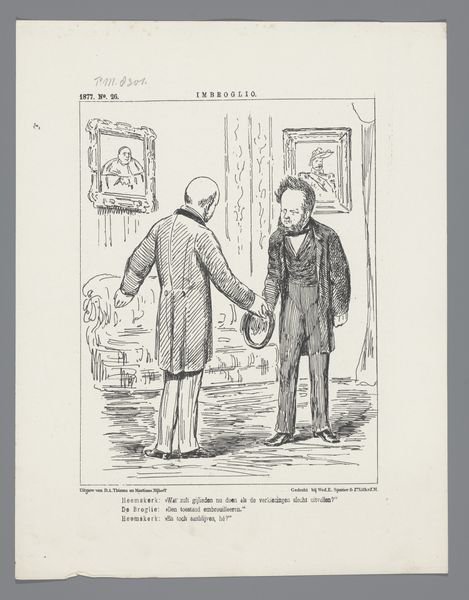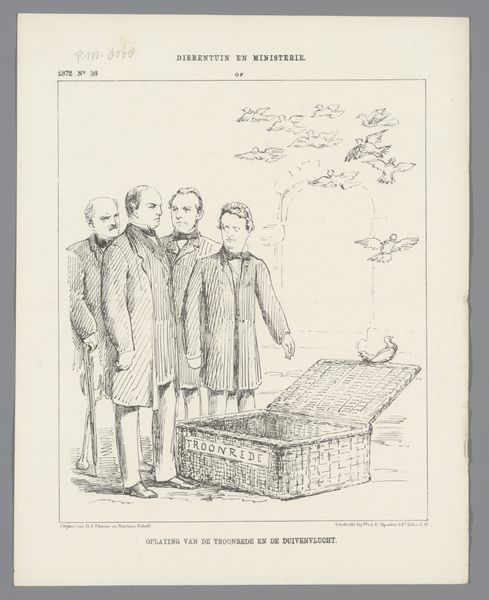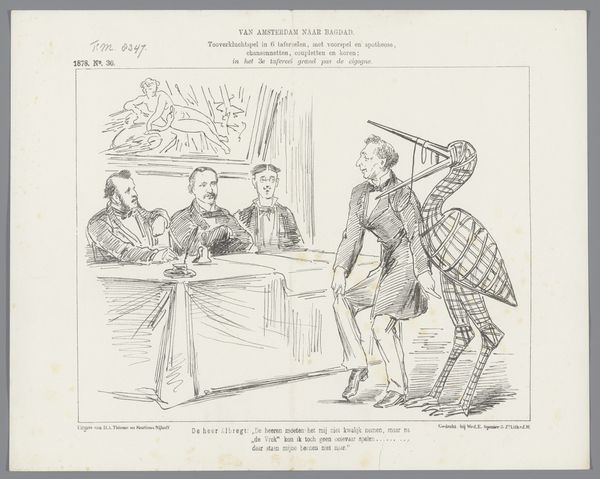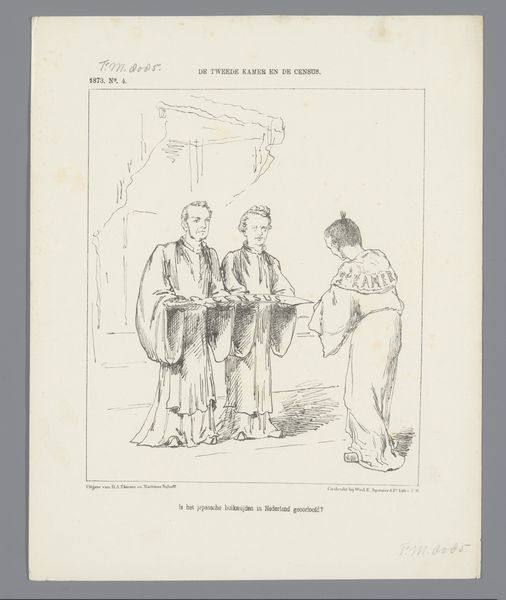
drawing, print, pen
#
drawing
#
comic strip sketch
# print
#
caricature
#
comic
#
pen
#
realism
Dimensions: height 275 mm, width 215 mm
Copyright: Rijks Museum: Open Domain
Curator: Well, this looks like a very serious business indeed, though something tells me it's meant to be humorous! Here we have "Spotprent over stemrecht, 1885" – a satirical print about voting rights dating back to 1885 by Johan Michaël Schmidt Crans. What catches your eye? Editor: All those cross-hatched lines—laborious. Look at the effort to produce this comic using just pen and print. You can feel the cost both in the artist's time, but also within the socio-political sphere it reflects. Curator: Yes, the technique speaks of its time – and it is wonderfully busy! To me it reads as both a sharp comment, and just plain fun, the way the figures are rendered... sort of earnest, but undeniably caricatured, don't you think? The fellow in the middle seems to disapprove more than agree. Editor: His oversized head gives him away. Look at that banner, though: "Stemrecht voorden gezetenwerkman." Voting rights for… seated workers? This links the act of voting with specific types of labor. Consider the political agenda embedded in the image itself through this phrase: it both excludes, but simultaneously elevates certain trades or individuals. Curator: Absolutely, you know it gives me an impression of some behind-the-scenes shenanigans. Three fellows putting their heads—and hands—together over a decree, and what that implies about power and who gets to wield it. Maybe this act—or pact—is shady. What do you feel about that quote below? Editor: “Ich sei...In eurem Bunde der Dritte," – "I am the third in your alliance". It suggests this new power arrangement excludes others. And those three dots after the character’s name? Whoever he is, his name is being suppressed, so this character may have been intended to evoke another prominent political figure at that time. The medium helps to immortalize a temporal concept with lasting effect. Curator: And isn’t it remarkable that with just ink, paper, and a clever hand, Crans captured so much about the political climate. I am reminded of Daumier, who wielded his lithographic crayon to change history...I wish I knew the whole backstory there to this image’s reception back in the day. Editor: Yes! Its directness remains affecting precisely because of the immediacy born from the medium, but it's more than just skillful satire...it's social commentary crafted meticulously through deliberate material engagement. It is always essential to assess the image within the production methods of its day, it’s time, to interpret the message more fully.
Comments
No comments
Be the first to comment and join the conversation on the ultimate creative platform.
